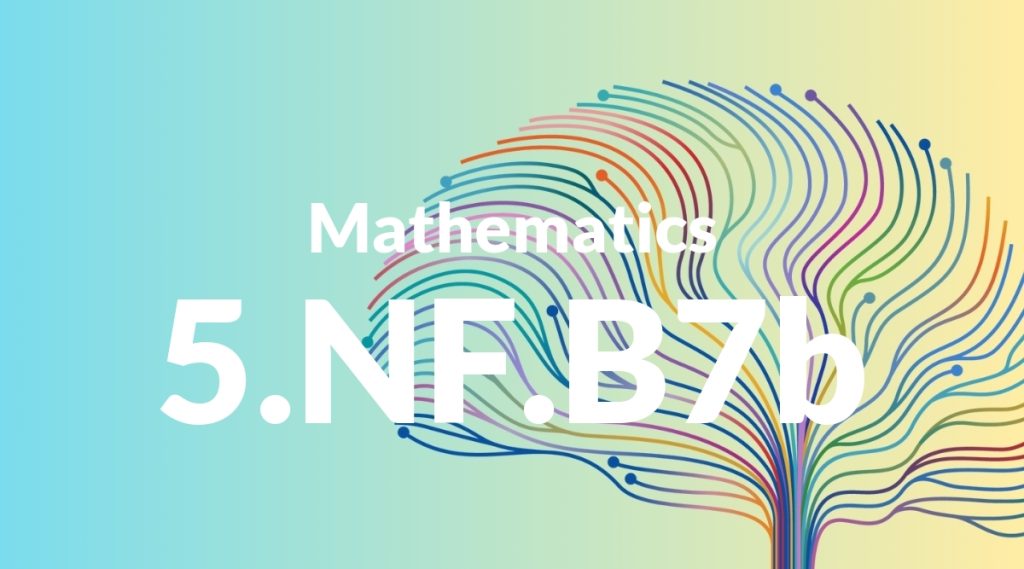Standard: 5.NF.B7b – Interpret division of a whole number by a unit fraction, and compute such quotients. For example, create a story context for 4 ÷ (1/5), and use a visual fraction model to show the quotient. Use the relationship between multiplication and division to explain that 4 ÷ (1/5) = 20 because 20 × (1/5) = 4.
Grade level: Grade 5
Subject: Mathematics
Domain: Numbers & Operations – Fractions
Teacher Overview
This standard focuses on helping students understand the division of whole numbers by unit fractions, a critical skill in developing a deeper understanding of fractions and their operations. Mastery of this standard sets the foundation for more advanced fraction operations and real-world applications. Students should have a solid grasp of basic division and multiplication, and an understanding of fractions, including how to visualize them using models.
After mastering this standard, students will be able to handle more complex fraction operations, such as dividing fractions by fractions, and apply these skills to solve real-world problems.
Common Misconception 1
A common misconception is that dividing by a fraction will result in a smaller number. This is incorrect because dividing by a fraction actually means determining how many of those fractional parts fit into the whole number, which results in a larger number.
Intervention 1
To address this misconception, use visual fraction models and real-world examples to demonstrate that dividing by a fraction increases the number of parts. For instance, show that dividing 4 by 1/5 means finding out how many 1/5s are in 4.
Common Misconception 2
Another misconception is confusing the process of dividing by a fraction with multiplying by a fraction. Students might think they need to multiply instead of divide.
Intervention 2
Clarify the inverse relationship between division and multiplication. Provide exercises that reinforce this concept, using both numerical problems and visual models to show how division by a fraction works.
Prerequisite Knowledge
Students should understand basic division and multiplication, as well as have a foundational understanding of fractions and how to visualize them.
Subsequent Knowledge
Students will advance to more complex operations with fractions, including dividing fractions by fractions and solving real-world problems involving fractions.
Instructional Activities
- Use visual fraction models to divide whole numbers by unit fractions.
- Create story problems that involve dividing whole numbers by unit fractions.
- Practice problems that reinforce the inverse relationship between multiplication and division.




